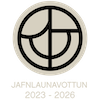Almenn verkefni 2023
Almenn verkefni 2023
Heiti verkefnis : | Greining á innbyggðu kolefni í vegainnviðum á Höfuðborgarsvæðinu og áætlun á losun frá fyrirhuguðum framkvæmdum | |
Verkefnastjóri : | ||
Stutt lýsing á verkefninu: | ||
Little is known about the embodied emissions of road infrastructure in Iceland. Our early studies give some indications but also point to the fact that accessible data ready to be utilized in such assessments does not exist. The aim of this study is to address this gap and quantify the embodied carbon emissions from the most commonly employed materials in infrastructure developments, i.e. roads, bridges, and other civil structures in the current infrastructure system as well as emissions from future development in the Reykjavik Capital area. The average per-capita carbon footprint of infrastructure in developed countries is 5 times larger than that of developing countries which indicates that if the Western infrastructure stocks were to be globalized using current technologies, it would eat up the remaining 1.5-2°C carbon budget available until 2050 (Müller et al., 2013). Due to the small population and high car ownership and car orientation in Iceland, the CO2 per capita from infrastructure is likely much higher than on average in other developed countries. Furthermore, ongoing infrastructure development on a large scale in the near future is expected in the Capital area which will add an unknown amount to global emissions. Addressing all domains of the built environment is necessary to achieve a truly sustainable city.
| ||
Tilgangur og markmið: | ||
Currently, embodied emissions of infrastructure are not well understood. Still, the magnitude of the infrastructure itself is of such scale that it can jeopardize the current mitigation goals.
The primary objectives of this project are to: 1) Provide insight into the embodied emissions of infrastructure in the Capital area. 2) Quantify emissions that will be created in the future development of road infrastructure in the Capital area.
This will be done by conducting a Life Cycle Assessment (LCA) which is the dominant method of environmental assessment in the construction sector (Säynäjoki et al. 2017). These are logical grounds for knowing emissions that the Capital area is responsible for and if they are aligned with official Climate Action Plans and mitigation strategies in terms of future emissions from infrastructure.
| ||

